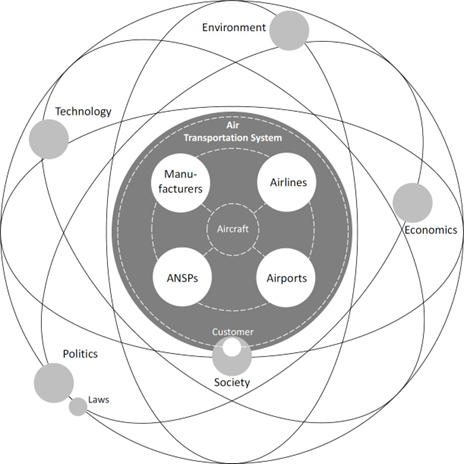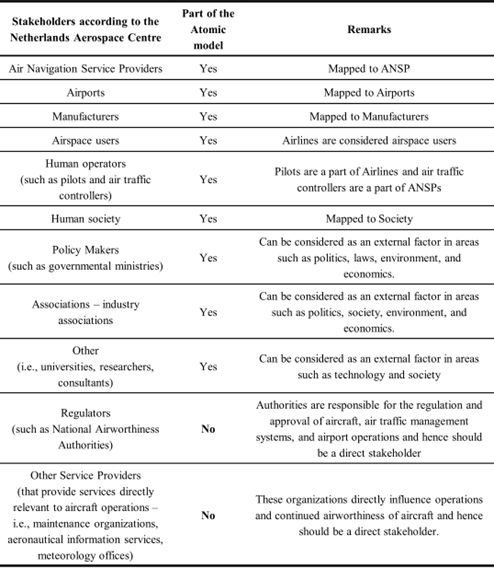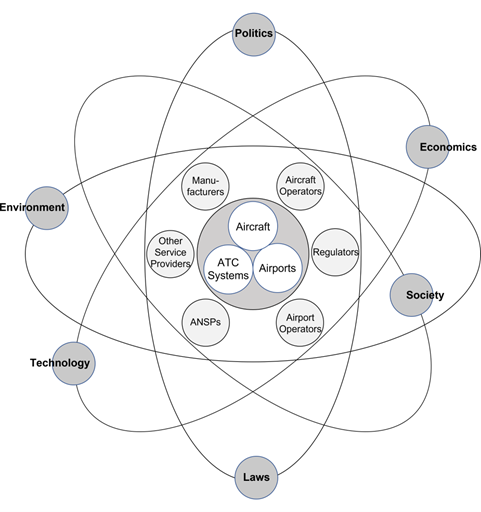An Air Transportation System-of-systems model
An aircraft is but one of multiple systems within an overarching air transportation system-of-systems (ATS) influenced by multiple stakeholders and external political, economic sociological, legal, technological, and environmental scenario factors. Gosh et al, illustrate the ATS using an Atomic Model, which helps to visualize the multiple elements and the complexity of the air transportation system-of-systems. This short note introduces the ATS Atomic Model as developed by Gosh et al. and suggests an enhanced version of the Atomic Model to add stakeholders and clarify the relationships of the stakeholders in what is deemed to be a more holistic model of the ATS.
By Leo Jeoh



